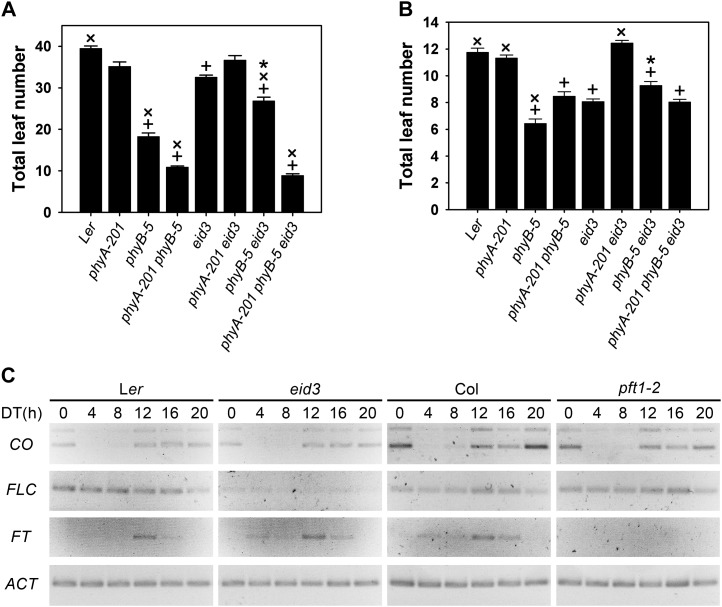Figure 7.
The eid3 mutant affects the floral transition and the expression of flowering genes. A and B, Flowering time of eid3, eid3 phyA-201, eid3 phyB-5, eid3 phyA-201 phyB-5, and corresponding background lines under variable daylengths. Flowering time was determined in short days consisting of 8-h-light/16-h-dark cycles (A) and long days consisting of 16-h-light/8-h-dark cycles (B). Flowering time is presented as the sum of rosette and cauline leaves at the main stem. Data represent means of at least two independent experiments ± se with 20 or more plants. + Significant difference from the Ler wild type; ×, significant difference from eid3; * significant difference from the eid3 double and triple mutants to corresponding phyA, phyB, and phyA phyB mutant background lines (one-way ANOVA on ranks, P < 0.05). C, Diurnal transcript accumulation patterns of different flowering genes in Ler wild type, eid3, Col wild type, and pft1-2. Plants were grown under 12-h light/dark cycles for 2 weeks. On day 14, samples were taken every 4 h starting at the onset of light (DT 0 h). Transcript levels were determined by RT-PCR using identical cDNA samples. CO, FLC, and FT transcript levels were monitored at the indicated time points. ACT transcript levels served as a constitutive control. Gels were stained with SYBR-safe DNA gel stain. Images are shown inverted. The gel shows representative results of two independent experiments.

